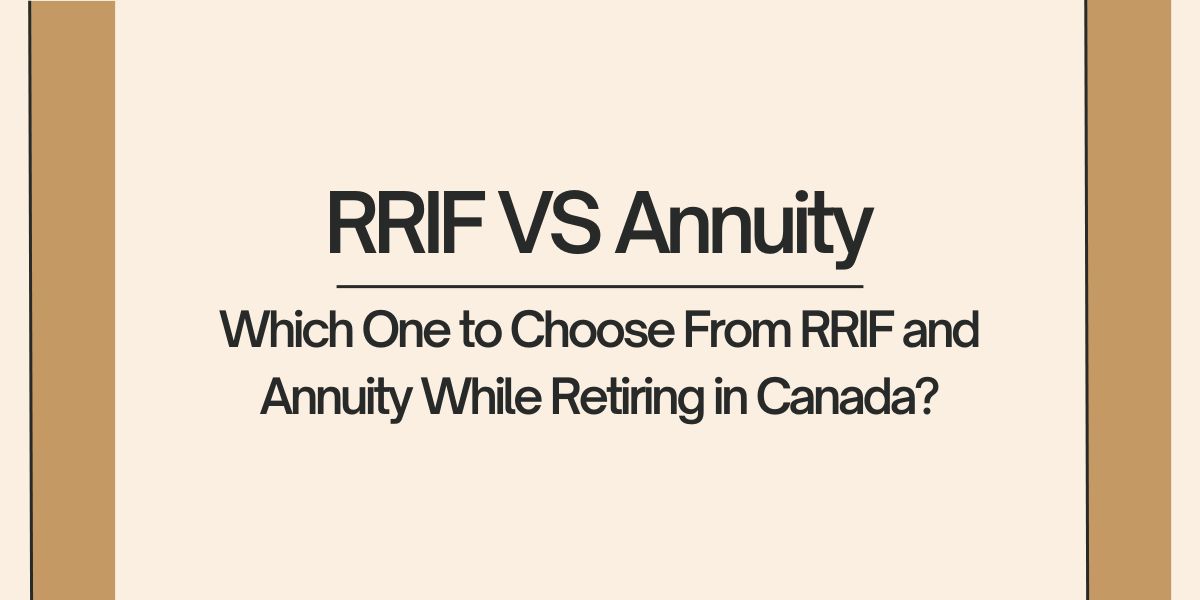Explore this post to understand the differences between RRIF VS Annuity and learn which option might be best for your retirement in Canada.
Contents
RRIF VS Annuity
When planning for retirement, it’s essential to understand the differences between an RRIF and an annuity. Both are ways to manage your investments, but they operate differently.
An RRIF, like your RRSP, consists of a mix of investments such as bonds or equities. In contrast, annuities function more like insurance policies, providing you with a fixed sum of money either monthly or annually for a set period.
If you’re starting to plan for your retirement, you might be curious about the differences between an RRIF and an annuity. This page offers a detailed comparison of the Registered Retirement Income Fund (RRIF) and the Registered Life Annuity (RLA). It’s a valuable resource to help you make informed decisions about your retirement planning.
Understanding RRIF
Your retirement income will come from a tax-sheltered investment account called a RRIF. This account holds the retirement funds that you saved in your RRSP. You must convert your RRSP into a RRIF by the age of 71, but the Canada Revenue Agency allows you to make this change earlier if you choose.
You can set up a registered retirement income fund (RRIF) with almost any financial institution, such as banks and life insurance companies. Simply visit your bank to get started. You can transfer money from one or more of your existing RRSPs to the financial institution managing your RRIF.
When investing in a RRIF, you have several options, including equities, mutual funds, GICs, ETFs, and other securities. You will need to continuously make investment decisions for your RRIF over time. Additionally, you can designate a beneficiary for your RRIF account.
RRIF VS Annuity Overview
| Article | RRIF VS Annuity |
| Country | Canada |
| Further Details | Find Here |
Understanding Annuity
Companies that sell life insurance often provide annuities, which are similar to pension plans. When retirees invest their RRSP funds into a payout annuity, the financial institution (typically a life insurance company) ensures lifetime payments. Annuity payouts can be structured to last until age 90 or provide income for life.
Once you invest in an annuity, you can no longer make additional lump sum withdrawals or other modifications. However, your investment is now protected from interest rate fluctuations and market volatility. Options include a combined life annuity for a married couple or a single life annuity for an individual.
Annuities remove the uncertainty of converting retirement funds into a steady monthly income. After purchasing the annuity, you no longer need to worry about how to manage your retirement assets or the impact of stock market volatility.
Comparing RRIF and Annuity
When planning for retirement, both annuities and RRIFs have their own sets of pros and cons. Opting for an RRIF offers flexible and potentially profitable long-term investment opportunities. However, this choice also comes with the risk of market fluctuations, meaning you could experience gains one day and losses the next.
On the other hand, an annuity provides the security of receiving a fixed amount regularly, but it limits your financial flexibility. It’s important to note that there is no tax advantage to choosing one over the other, as both RRIF withdrawals and registered annuity income are taxed at the same rate on your tax return.
The main difference is that while your RRIF is taxable, your annuity is not; payments simply cease when the guarantee term ends. If you pass away first, an RRIF can be transferred tax-free to your surviving spouse. However, if you pass away second, the amount is added to your estate’s income for that year and becomes taxable.
Which One to Choose From RRIF and Annuity While Retiring in Canada?
When it comes to their RRSP savings, most Canadians choose an RRIF over an annuity. Here are some guidelines to help you decide between an annuity and an RRIF:
- Choose an RRIF if you want more flexibility.
- If you have a higher tolerance for investment risk, an RRIF may be more suitable for you.
- If you have other sources of annuity or pension income besides CPP or OAS, you might prefer an RRIF.
- If you believe you will have a shorter life expectancy, consider an RRIF.
- If you want to leave money for your spouse or other beneficiaries, an RRIF might be the better option.
You can obtain an RRIF from an insurance firm or a bank. However, only a licensed life insurance representative from a Canadian Life Insurance firm can purchase a registered life annuity.
We appreciate you taking the time to read this post on RRIF vs. Annuity. We sincerely hope that it assists you in making a deliberate choice.
VACTF Home






